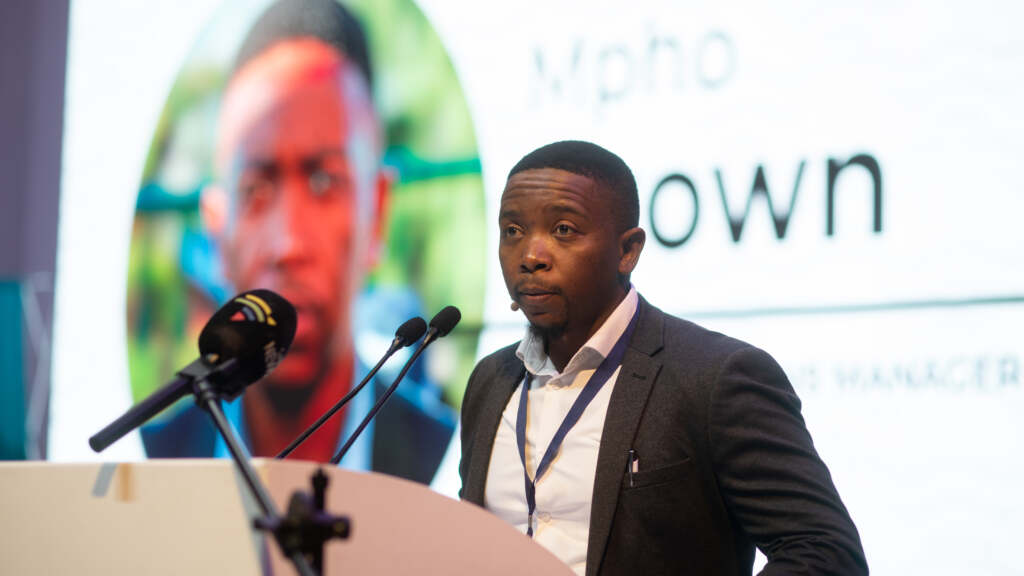Sakhile Khaweka
Prioritising local vaccine manufacturing, distribution and rollout remains crucial to addressing some of the challenges that are faced by the African continent’s health systems. Making sure that vulnerable communities have access to life-saving health innovations is not only going to ensure that millions of people live longer but will also yield economic benefits for developing economies.
The African health landscape is one that is riddled with several complex challenges that call on all of us to act with the utmost urgency. Some of the challenges that stem from colonialism and persist to this day like malnutrition, social inequality, uncoordinated regulatory bodies, poor health infrastructure development and the decline in funding for healthcare by the governments.
While all of these issues and challenges had been identified and progress had been made to address them as envisioned in the Framework of Actions (FAS) which seeks to strengthen healthcare systems for Universal Health Coverage (UHC) and the Sustainable Development Goals (SDGs) for Africa, the COVID-19 pandemic exposed the vulnerabilities that persist in many health systems on the continent.
Adding to the challenges faced by the continent is the climate change emergency which has resulted in the increase of emerging infectious diseases that have spread outside their endemic locations. Between 2011 and 2021, Africa has been ravaged by ebola, measles, yellow fever, zika virus, chikungunya virus, rift valley fever and coronavirus, outbreaks that added to the existing burden of diseases caused by malaria, tuberculosis (TB) and the human-immunodeficiency virus (HIV).
According to the World Health Organisation (WHO) high burden diseases like malaria is responsible for an estimated 608 000 deaths in 2022 with 95 percent of cases in Africa, TB was responsible for an estimated 424 000 deaths in 2022 and an estimated 25.6 million people on the continent are living with HIV with up to 380 000 deaths caused by AIDS-related illnesses. These three diseases and other infections are responsible for the loss of economic productivity amounting to more than $800 billion annually.
Non-communicable diseases (NCDs) like cardiovascular disease, diabetes, hypertension and obesity have also reached catastrophic levels with devastating outcomes resulting in more than 41 million deaths annually with 77 percent of premature deaths caused by NCDs occurring in low-middle-income countries. The human papillomavirus (HPV) which has the potential of causing cervical cancer in women and the HPV vaccine remains crucial in preventing 90 percent of cervical cancer-related deaths.
Furthermore, prioritising vaccine manufacturing in Africa would curb the maternal mortality ratio (MMR) by at least 20.3 percent to achieve the SDG target by 2030. Africa currently accounts for 69 percent of global maternal deaths. Child mortality on the other hand accounts for up to 50 percent of deaths of children under five who die from pneumonia, malaria, measles, diarrhoea, HIV and tuberculosis.
The state of Africa’s vaccine industry which makes up less than one percent of the global demand and the growing threat of infectious diseases like Mpox, cholera and meningitis. Mpox has become the latest public health emergency with more than 74 000 reported cases and 193 deaths globally.
Africa has since 2022 reported over 6800 cases and 173 deaths. The resurgence of these diseases is currently a public health emergency that requires the urgent strengthening of local vaccine manufacturing capabilities that will foster sustainable equitable access to life-saving products that will restore the continent’s health. On the other hand, the hepatitis B vaccine can prevent the over 1.1 million deaths caused by cirrhosis and hepatocellular carcinoma (primary liver cancer) in 2022.
Strides have been made to turn Africa into a self-reliant region that is capable of having a thriving vaccine manufacturing industry. This has been demonstrated through the 13 operational companies in South Africa, Egypt, Morocco Senegal, Ethiopia and Ghana – that either have fill and finish capabilities or are manufacturing drug substances. Nigeria, Ethiopia, Algeria, Rwanda and Uganda are also making efforts to establish their own manufacturing capabilities.
These strides are encouraging but more needs to be done to boost the research and development capabilities that are crucial to countries succeeding in their efforts to manufacture vaccines locally. Enabling framework like the Priority Vaccine Manufacturing (PAVM) Framework outlines the continent’s strategic direction to address the 22 legacy diseases, expanding diseases and outbreak diseases. The framework seeks to scale up local vaccine manufacturing to address the reliance on global suppliers.
Some of the notable milestones that align with the PAVM include the RTS, S/AS01 malaria vaccine for children in areas with moderate-to-high malaria transmission and the WHO recommended R21/Matrix-M malaria vaccine. While there is currently no vaccine for HIV, the development of the longstanding, twice a year injectable Pre-Exposure Prophylaxis (PreP) Lenacapavir, changes the landscape in the prevention of HIV transmission amongst key populations in Africa. The third priority disease for Africa, TB currently has 11 vaccine candidates that are undergoing clinical trials that are critical to reducing the global burden of TB.
The African Medicines Agency (AMA), African Continental Free Trade Area (AfCFTA) and the Pharmaceutical Manufacturing Plan for Africa (PMPA) are some of the mechanisms that will play a crucial role in improving access to locally manufactured vaccines by addressing the challenges of poor access to market, financial mechanisms to support vaccine manufacturing, streamlined regulatory processes to fast-track the approval of vaccines, training and equipping the local workforce with practical experience and global collaboration, and developing partnerships with multinational companies to create an enabling environment that will support local manufacturing.
Sakhile Khaweka is the Policy and Advocacy Project Manager at the South African Health Technologies Advocacy Coalition (SAHTAC), whose secretariat is hosted by the Aurum Institute. An advocate for Global health, HIV, TB, Malaria and priority diseases in Africa. Advancement of Vaccines and health technologies manufacturing and access in Africa. Prior to this, she held several roles a Policy and Advocacy officer in PATH and Wateraid. She has extensive expertise in policy analysis, advocacy strategies and implementation, campaigns, and development communication and has contributed significantly to the advancement of Global Health.
Khaweka is passionate to empowering women and children through education. She is also an advocate for health research development, comprehensive SRHR and menstrual health management for women and girls, education, and equitable access to WASH. Her interests include advocacy for policy change, capacity building, and development communication. Additionally, she serves in the board as a vice chairperson for New Life Girls Home in Midrand, Johannesburg.
SAHTAC is an advocacy organisation dedicated to promoting access to health technologies and improving health outcomes across communities in South Africa.
We work collaboratively with partners to ensure equitable access to life-saving treatments and to raise awareness about key health issues.
Summary
- While all of these issues and challenges had been identified and progress had been made to address them as envisioned in the Framework of Actions (FAS) which seeks to strengthen healthcare systems for Universal Health Coverage (UHC) and the Sustainable Development Goals (SDGs) for Africa, the COVID-19 pandemic exposed the vulnerabilities that persist in many health systems on the continent.
- According to the World Health Organisation (WHO) high burden diseases like malaria is responsible for an estimated 608 000 deaths in 2022 with 95 percent of cases in Africa, TB was responsible for an estimated 424 000 deaths in 2022 and an estimated 25.
- The resurgence of these diseases is currently a public health emergency that requires the urgent strengthening of local vaccine manufacturing capabilities that will foster sustainable equitable access to life-saving products that will restore the continent’s health.

Your Trusted Source for News and Insights in Lesotho!
At Newsday Media, we are passionate about delivering accurate, timely, and engaging news and multimedia content to our diverse audience. Founded with the vision of revolutionizing the media landscape in Lesotho, we have grown into a leading hybrid media company that blends traditional journalism with innovative digital platforms.









